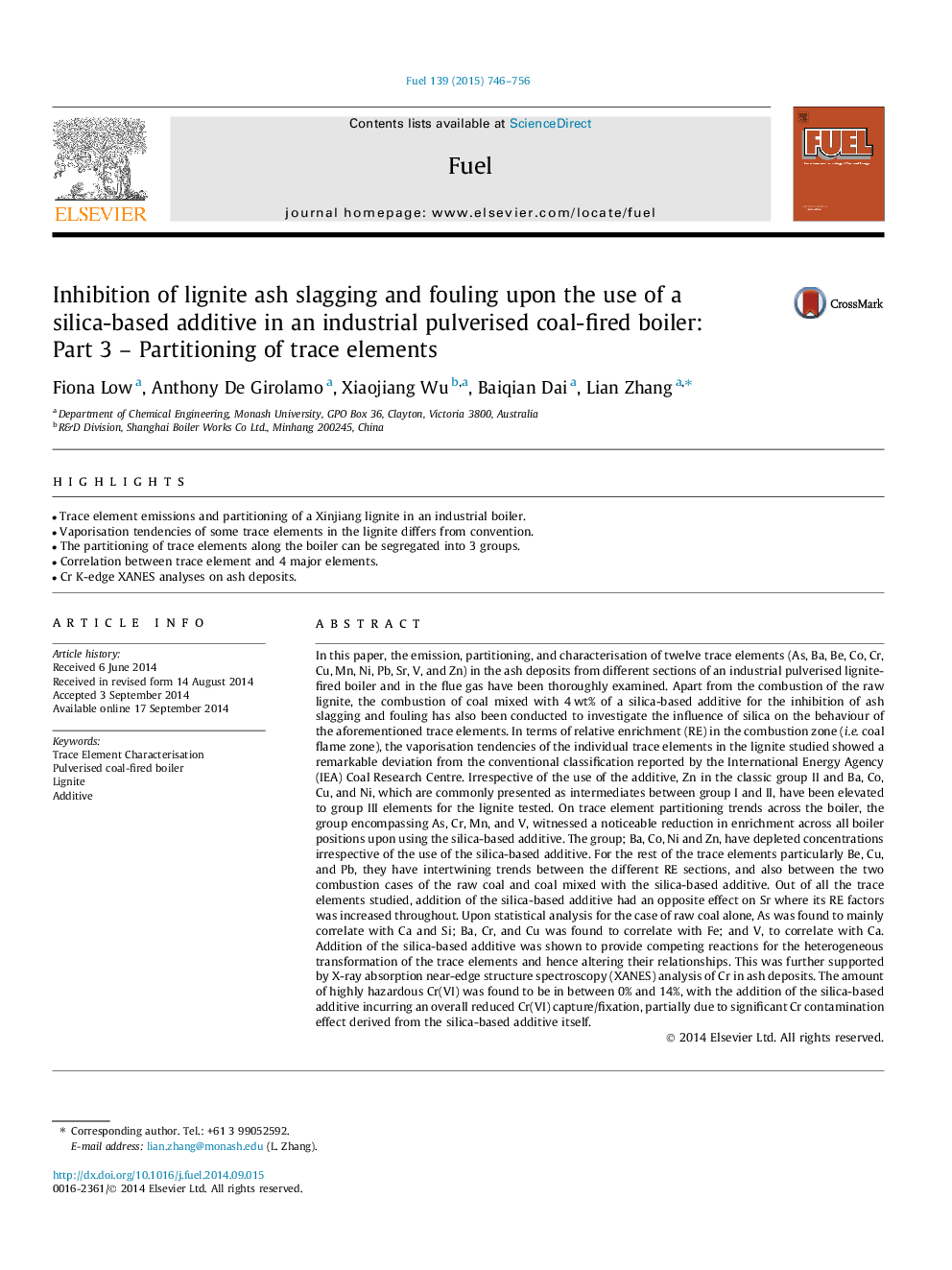| کد مقاله | کد نشریه | سال انتشار | مقاله انگلیسی | نسخه تمام متن |
|---|---|---|---|---|
| 6636598 | 461134 | 2015 | 11 صفحه PDF | دانلود رایگان |
عنوان انگلیسی مقاله ISI
Inhibition of lignite ash slagging and fouling upon the use of a silica-based additive in an industrial pulverised coal-fired boiler: Part 3 - Partitioning of trace elements
ترجمه فارسی عنوان
مهار رسوب زغال سنگ شلغه و استفاده از افزودنی بر پایه سیلیس در دیگ بخار زغال سنگ صنعتی صنعتی: بخش 3 - جداسازی عناصر کمیاب
دانلود مقاله + سفارش ترجمه
دانلود مقاله ISI انگلیسی
رایگان برای ایرانیان
کلمات کلیدی
شناسایی عناصر ردیابی، دیگ بخار زغال سنگ پالستیک، سنگ قیمتی، افزودنی،
موضوعات مرتبط
مهندسی و علوم پایه
مهندسی شیمی
مهندسی شیمی (عمومی)
چکیده انگلیسی
In this paper, the emission, partitioning, and characterisation of twelve trace elements (As, Ba, Be, Co, Cr, Cu, Mn, Ni, Pb, Sr, V, and Zn) in the ash deposits from different sections of an industrial pulverised lignite-fired boiler and in the flue gas have been thoroughly examined. Apart from the combustion of the raw lignite, the combustion of coal mixed with 4Â wt% of a silica-based additive for the inhibition of ash slagging and fouling has also been conducted to investigate the influence of silica on the behaviour of the aforementioned trace elements. In terms of relative enrichment (RE) in the combustion zone (i.e. coal flame zone), the vaporisation tendencies of the individual trace elements in the lignite studied showed a remarkable deviation from the conventional classification reported by the International Energy Agency (IEA) Coal Research Centre. Irrespective of the use of the additive, Zn in the classic group II and Ba, Co, Cu, and Ni, which are commonly presented as intermediates between group I and II, have been elevated to group III elements for the lignite tested. On trace element partitioning trends across the boiler, the group encompassing As, Cr, Mn, and V, witnessed a noticeable reduction in enrichment across all boiler positions upon using the silica-based additive. The group; Ba, Co, Ni and Zn, have depleted concentrations irrespective of the use of the silica-based additive. For the rest of the trace elements particularly Be, Cu, and Pb, they have intertwining trends between the different RE sections, and also between the two combustion cases of the raw coal and coal mixed with the silica-based additive. Out of all the trace elements studied, addition of the silica-based additive had an opposite effect on Sr where its RE factors was increased throughout. Upon statistical analysis for the case of raw coal alone, As was found to mainly correlate with Ca and Si; Ba, Cr, and Cu was found to correlate with Fe; and V, to correlate with Ca. Addition of the silica-based additive was shown to provide competing reactions for the heterogeneous transformation of the trace elements and hence altering their relationships. This was further supported by X-ray absorption near-edge structure spectroscopy (XANES) analysis of Cr in ash deposits. The amount of highly hazardous Cr(VI) was found to be in between 0% and 14%, with the addition of the silica-based additive incurring an overall reduced Cr(VI) capture/fixation, partially due to significant Cr contamination effect derived from the silica-based additive itself.
ناشر
Database: Elsevier - ScienceDirect (ساینس دایرکت)
Journal: Fuel - Volume 139, 1 January 2015, Pages 746-756
Journal: Fuel - Volume 139, 1 January 2015, Pages 746-756
نویسندگان
Fiona Low, Anthony De Girolamo, Xiaojiang Wu, Baiqian Dai, Lian Zhang,
